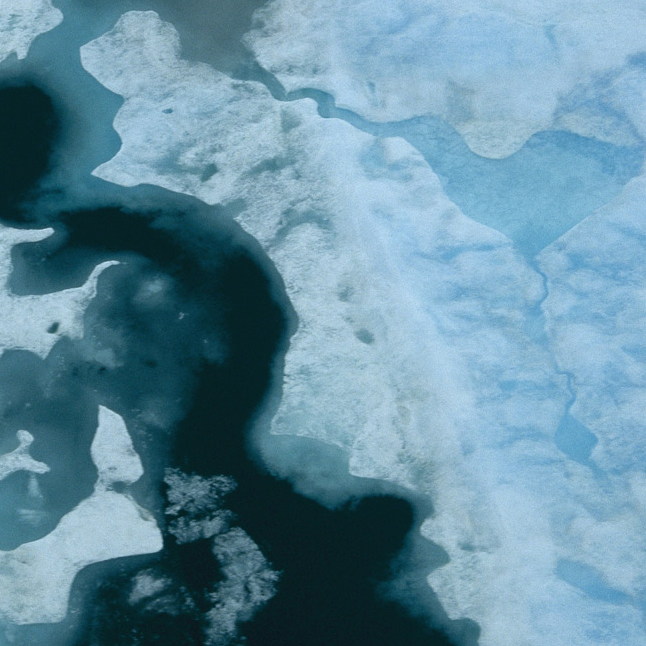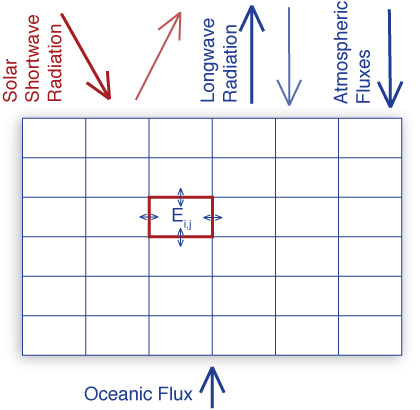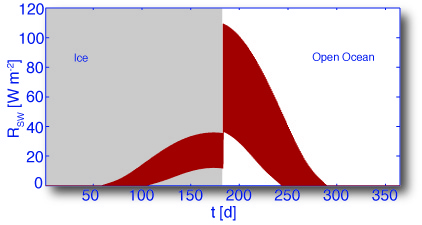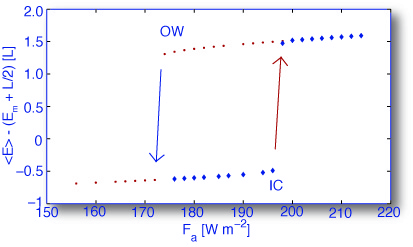

Figures
Click for full size and caption.




Thinning and retreating Arctic sea ice during recent decades with record lows in summer ice extent point to a warming climate in the Arctic. This may lead to changes in storm tracks through the Arctic, North Atlantic and North Pacific, and it may also lead to changes in the Arctic ocean circulation that increase surface temperatures and potentially increase precipitation at northerly latitudes. It is important for life on our planet to derive insight into possible future climate scenarios. Global circulation (climate) models (GCMs) are very powerful to study large-scale interactions between oceans, landmasses and atmosphere; their complexity however makes it very difficult to assess feedback processes in climate without the concurrent use of simple models where the physics can be understood. We developed a two-dimensional energy-based regular network model to study the stability of Arctic model sea ice. A lattice of ice-ocean cells is driven by radiative atmospheric heat fluxes at the top surface and by oceanic heat influxes at the bottom; the cells can undergo an ice-water phase transition and transport energy. Surface pattern formation processes, short- and long-term behavior of Arctic model sea ice, and conditions for perennial and seasonal ice cover are topics under study.
This research is supported by a 2009 Global Change Student Research Grant sponsored by the Cooperative Institute for Alaska Research (CIFAR), by UAF graduate fellowships, by the Department of Energy through grant number DE-SC0001898, and the Arctic Region Supercomputing Center
M Mueller-Stoffels and R Wackerbauer, Albedo parameterization and reversibility of sea ice decay, Nonlinear Processes in Geophysics 19, 81 (2012).
M Mueller-Stoffels and R Wackerbauer, Regular network model for the sea ice-albedo feedback in the Arctic, Chaos 21, 013111 (2011).